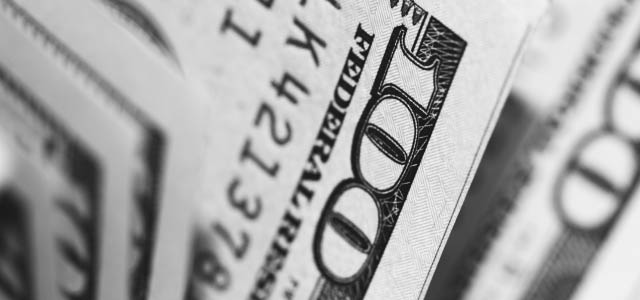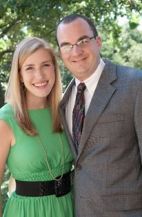CARES Act could bring Financial Relief to Churches Amidst Bans on Large Gatherings by John Litzler

[adning id=”33097″]

This morning, March 27, the U.S. House of Representatives voted to approve the Coronavirus Aid, Relief, and Economic Security Act or the CARES Act. The $2 trillion coronavirus relief package, which was Senate Bill 3548, was also unanimously passed by the U.S. Senate on March 24th. A large portion of that relief, $349 billion, will fund the Paycheck Protection Program. The goal of the Paycheck Protection Program is to help support the ongoing operations of small businesses by allowing them to make payroll and retain their employees. The Program does not exclude churches or other religious nonprofits from applying for loans. This is welcome news as one estimate projected that as many as 50 percent of nonprofits would be forced to close as a result of the coronavirus pandemic without some form of economic relief.
[adning id=”33207″]
Who is eligible for the Paycheck Protection Program?
Eligible recipients of a covered loan from the Paycheck Protection Program (called Paycheck Protection Loans) include any business concern (an individual or an entity), nonprofit organization, veterans organization, or Tribal business concern that employs no more than 500 employees and certifies that the uncertainty of current economic conditions make necessary the request for a loan to support ongoing operations. Both full-time and part-time employees are counted as well as seasonal and other types of employees. The Small Business Administration (SBA) may increase the number of employees and there may be some other exceptions that apply to organizations with over 500 employees as well. The applicability of the Program to entities with over 500 employees is less clear. Under a different section,the CARES Act refers to an organization that employs no more than 500 employees “per physical location”. This language has led some to speculate whether a large employer with multiple physical locations (e.g. a megachurch with several campuses) could be eligible for the program. However, most churches and Christian nonprofits will easily be under the 500-employee threshold and therefore eligible to apply. Under the Act, a nonprofit organization is any organization described in Section 501(c)(3) of the Internal Revenue Code and that is exempt from Section 501(a) of the Internal Revenue Code. It’s important to note that the IRS automatically treats all churches as tax-exempt even if they have not applied for 501(c)(3) status or if they claim such status under the umbrella of a larger 501(c)(3) organization. For this reason, every church with fewer than 500 employees should be considered an eligible recipient.
What time period does the CARES Act cover?
The CARES Act defines the covered period as the period beginning February 15, 2020 and ending June 30, 2020. These dates are important for calculating the amount of the loan and eligibility for loan forgiveness (more on loan forgiveness later).
How do we determine our loan amount?
An organization can determine the loan amount for which it is eligible by multiplying its average monthly payroll costs for a time period of 1-year before the application for the loan is made by 2.5. Payroll costs include:
- salary, wages, commission, or similar compensation
- payment of cash tips or equivalent
- payment for vacation, parental, family, medical, or sick leave
- allowance for dismissal or separation
- payments for group heal care benefits including insurance premiums
- payments for retirement benefits
- payments of State or local assessed taxes on employee compensation
However, the compensation of an individual employee in excess of an annual salary of $100,000 will not count toward the payroll costs. For churches and religious nonprofits, this is most likely to occur with the salary of an organization’s Senior Pastor or Executive Director. Predictably, the CARE Act doesn’t address a minister’s housing allowance. Those types of issues are too detailed for this early stage of the process. While the SBA may eventually pass rules and guidelines addressing such matters, the CARES Act only defines the Paycheck Protection Program in broad terms. There are some other exceptions when calculating payroll costs. For example, the compensation for any employee with a principal place of residence outside of the United States cannot be counted toward payroll costs. A Paycheck Protection Loan may not exceed $10 million.
[adning id=”33207″]
Example: Church “A” applies for a Paycheck Protection Loan on April 1, 2020. From April 2019 through March 2020 Church “A” had payroll costs of $625,000. However, during that time period, the Senior Pastor’s compensation was $125,000. For the purpose of calculating the loan, $25,000, the amount of the pastor’s compensation in excess of $100,000, will not be counted in the payroll costs. This means that Church “A” has an annual payroll cost of $600,000. Church “A” should divide that amount by 12. The monthly payroll cost of Church “A” is $50,000. Church “A” is eligible to apply for a Paycheck Protection Loan in the amount of $125,000 (the monthly payroll cost multiplied by 2.5).
What if ourChristian nonprofit engages in seasonal business?
Although not common with churches, many other Christian nonprofit organizations (e.g. like Christian camps) engage in seasonal business. For the purposes of the Paycheck Protection Program, the SBA determines which businesses are seasonal employers. When an organization that is a seasonal employer is in peak season it may employ several dozen additional employees’ that it does not employ the rest of the year (when it is not peak season). A nonprofit that is also a seasonal business should calculate its payroll costs by either (1) using the 12-week period beginning on February 15, 2019or (2) using the time period from March 1, 2019 to June 30, 2019. The nonprofit can decide which of these two options to use. The goal is to determine what the organization’s needs will be during the covered period by looking at how many employees the organization had during the same time period in 2019.
What if our Christian nonprofit has only existed for a few months?
Many churches and Christian nonprofits only came into existence in recent months. Although those organizations don’t have a full year of payroll costs, they are still eligible to apply for a Paycheck Protection Loan, provided the organization was in existence prior to February 15, 2020. The method for calculating monthly payroll costs for these organizations is using the payroll costs from January 1, 2020 to February 29, 2020 and dividing by two.
What can a Paycheck Protection Loan be used for?
While the loan amount is based on payroll costs from the 1-year period prior to applying, the funds can be used for many things in addition to the organization’s payroll costs. Paycheck Protection Loans may be used toward payroll costs, contributions to healthcare benefits (paid sick, family medical leave and insurance benefits), employee salary and compensation, interest payments on a mortgage, rent, utilities, and any other debts the organization incurred prior to February 15, 2020 (the beginning of the covered period).
[adning id=”33207″]
What was the part about Paycheck Protection Loans being forgiven?
Up to 100 percent of aPaycheck Protection Loan may be forgiven, effectively turning the “loan” into a grant. Whether a Paycheck Protection Loan is forgiven under the program depends on the purpose for which the funds from the loan were spent and the number of the organization’s full-time employees. Any funds spent on payroll costs, interest on a mortgage, to pay a rent obligation, or to cover a utility payment are eligible for forgiveness.
The method for determining the amount of the loan that will be forgiven is calculating the percentage difference between the average number of the organization’s full-time employees per month during the covered period (February 15 – June 30, 2020) and either (1) the number of the organization’s full-time employees from February 14 – June 30, 2019 or (2) the number of the organization’s full-time employees from January 1 – February 29, 2020 and then reducing the total loan amount by that percentage.
In other words, any organization that averages the same or more full-time employees during the covered period than it averaged during this same time last year will be eligible to have its entire loan forgiven. Additionally, the amount of loan forgiveness will be reduced by any reduction in total salary or wages of any employee in excess of 25%. In other words, if an organization cuts salary by 30% between now and June 30, then the total amount of loan forgiveness for which the organization would have been eligible will be reduced by 5%.
The rules may seem complicated, but the intent is simple. The purpose of the Paycheck Protection Program is to help organizations stay afloat by covering the payroll costs of the organization’s employees. An organization that accepts a loan and then terminates its employee or significantly reduces the employee’s compensation is behaving in a manner inconsistent with the purpose of the loan.
Under the Program, the SBA must waive any of its fees associated with the loan. The lender (bank, credit union, etc.) may not charge a fee in excess of the limit set by the SBA. That amount hasn’t been determined yet. Similarly, the interest rate for any portion of the loan that is not forgiven has not been set either. However, the CARES Act states that the interest rate cannot exceed 4 percent. Borrowers will have 10 years to pay back any loan amount in excess of what is forgiven, and no payments will be due until after 2020.
Example: Nonprofit “B” borrowed $100,000 through a Paycheck Protection Loan. 100% of the funds from the loan went to payroll costs, utilities, and rent payments. As a result, Nonprofit “B” files an application seeking forgiveness of 100% of the loan. Nonprofit “B” averaged 11 full-time employees from February 15, 2019 to June 30, 2019. Nonprofit “B” averaged 10 full-time employees from January 1, 2020 to February 29, 2020 and averaged 9 full-time employees during the covered period (February 15 – June 30, 2020). Nonprofit “B” elects to use the time period from January and February. During the covered, period Nonprofit “B” averaged 90% of the full-time employees it averaged in January and February. As a result, 90% of the Paycheck Protection Loan Nonprofit “B” received will be forgiven. The remaining 10% ($10,000) will be due over the next 10 years at an interest rate of no more than 4% and no payments will be due until January 1, 2021.
What steps can our Christian nonprofit be taking now?
There are still actions that need to take place before churches and other Christian nonprofits can apply for Paycheck Protection Loans. First, the President must sign the bill into law. President Trump has already stated that he will do so immediately after the bill passes. Even then, the CARES Act only contains general outlines for the Paycheck Protection Program. At the time of this writing,there are no federal rules and regulations for the Program. In fact, there aren’t even applications for the loans. The Program is equally new and unfamiliar to the SBA, local lending institutions, and eligible recipients.However, here are some steps your organization can take right away:
(1) Assemble your leadership group (finance committee, board of directors, elders, etc.), remotely of course, and discuss whether your organization would like to apply for a Paycheck Protection Loan. Make sure you follow the requirements in your organization’s bylaws and other governing documents regarding a vote authorizing the representatives of the organization to take the loan on the organization’s behalf.
(2) Contact your local lender/lending institution and let them know you are interested in applying for the new Paycheck Protection Loan from the SBA. It’s ideal if this is a bank or other lender with which you already have an account. Your organization’s ongoing relationship increases the likelihood that they will contact you to tell you when the loan applications become available. It will also make depositing the loan into your account quick and seamless. As previously stated, its unknown what fees a lender will be allowed to charge, so be certain to ask prior to filing a loan application.
(3) Calculate the amount of the Paycheck Protection Loan for which your organization will qualify and engage in financial planning using that projected amount. Organizations receiving a Paycheck Protection Loan need to plan to retain as much of their staff as possible, because forgiveness of the loan is tied to the number of full-time employees the organization has. The church will need to know the payroll costs of each individual employee.
The months ahead will be mentally, emotionally, and financially difficult for churches and other Christian nonprofit organizations. Now is the time for church leaders to pause, pray, and plan about how to be good stewards of their resources, including any funds that come from participating in the new Paycheck Protection Program.
If your organization has questions, the Church Law Division of Christian Unity Ministries is available to help. Please don’t hesitate to contact us.

John Litzler directs the Church Law division of Christian Unity Ministries in San Antonio. He is a graduate of the University of Texas and Baylor Law school. He is a member of the SSHS class of 2004.
[adning id=”33207″]














